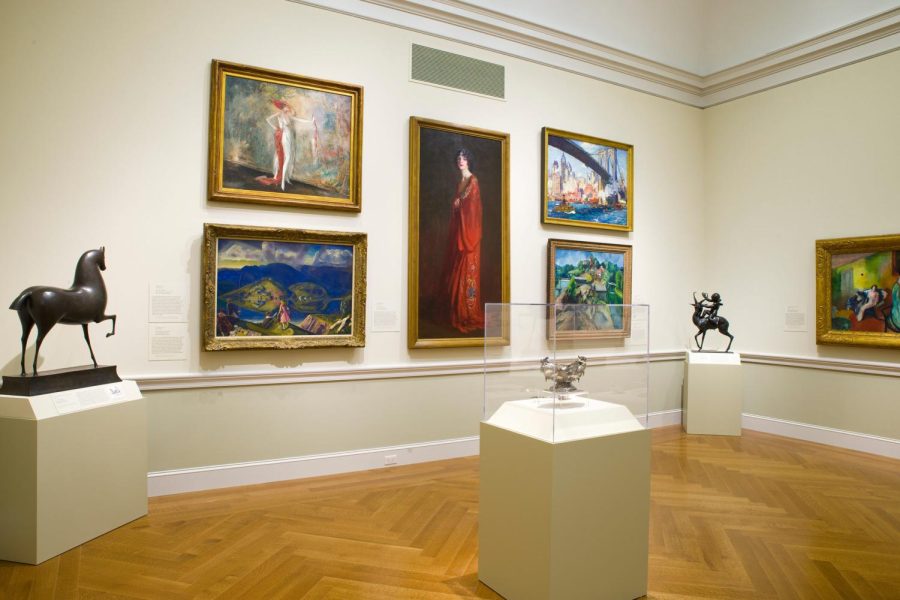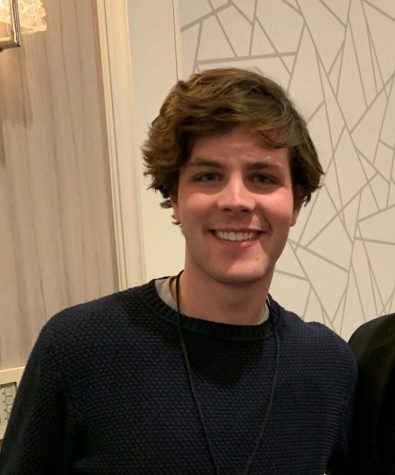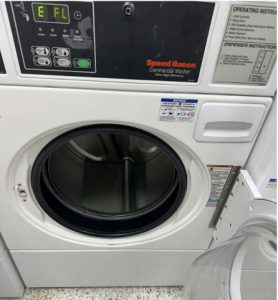Can art make you a better person?
Or at least a less bad person…
TJ Lindstrom shares his opinions on what separates entertainment from art.
Nov 7, 2022
Maybe I’m naive, but I spend a lot of time trying to become a better person –– or at least a less bad person. Putting in the work to distinguish between art and entertainment is essential to living this more meaningful life. I try to say this in the least pretentious way possible; I am obsessed with the question only because I struggle deeply with finding meaning in life. I have days where the world seems a shade darker because I can’t shake this feeling that I’m just going through the motions, playing a character. Perhaps it is because of my idiosyncratic depression, perhaps it is part of the universal condition of being human. Regardless of the cause, the consequences are alienating. I feel that alienation is growing, both in my life and in the world. It’s cliché at this point to say that we are more connected yet lonelier than ever, but I think a cliché wouldn’t be cliché if it didn’t contain some bit of truth.
Part of loneliness, part of this collective loss of meaning comes from the increasing mediation of society. To live in postmodernity is to be inundated with abundance. Abundance of stuff, abundance of work, abundance of consumption, of content, of information. A hallmark of the postindustrial economy is b.s. [my editor won’t let me say bull—t; when you read this, dear reader, please say “bull—t” in your head].
In an overly-financialized economy, where money abounds but practical, meaningful, constructive investment doesn’t, much of the workforce trades in b.s. Consultants who fly in to decide which employees to fire, advertisers who spend months running focus groups on an ad for tortilla chips, the producer who spent weeks looking for the perfect empty lot to shoot an eight-second scene for the new Marvel movie or the entire team of McDonald executives it took to launch the adult Happy Meal.
There are structural, economic dimensions to the b.s. McDonalds and its team of McXecutives certainly made a bunch of money from their work; the investors funding the whole thing were most pleased. But there are also personal, psychological dimensions to the b.s. I think a major force behind this latter category of causes is our media diet.
Of course, the economic and psychological dimensions also intersect in the political economy of media. The owners of media, the rich and politically powerful, weigh on our construction of our personas in the media they produce. They tend to reinforce the ideology of consumption because they stand to gain the most from consumption. More on this later.
The more I live –– the more I think, the more I consume –– the more I am convinced that these constellations of media problems are central to the broader ills of our society. So much of our media now is b.s. – entertaining, but b.s. That’s fine some of the time. I love a good McChicken now and again (cheap, tasty, Mayo-y, pepper-y and somewhat filling), but if it was the only thing I consumed I’d probably get scurvy or something. Our media diet is the same way.
To begin sketching the distinction between art and entertainment, let me run through an example of two excellent TV shows I’ve watched recently: “The Handmaid’s Tale” and “Ted Lasso.” Cards on the table, I love both of these shows, so I am truly not trying to make any value judgment between the two. Simply, I think the former is art and the latter is entertainment. And that is a useful distinction to draw. The difference between art and entertainment lies in the number of layers of interpretation. Entertainment has one (maybe one and a half); art has many.
“Ted Lasso” is driven by characters interacting in a plot. You have the wholesome, kind and dedicated Ted Lasso, plucked from coaching college football in the US and dropped into coaching professional soccer (football) in the UK. The life force of the show, the device that makes it compelling and fun to watch, is this funny circumstance and the interesting characters filling it. Ted’s relationship with the club’s owner, Rebecca Welton, and the various team members offers plenty of funny (and even moving) moments. But in the end, Ted Lasso is content about characters. Ted is a pretty static character while some of the characters (Rebecca, Roy, Jamie) develop as the story unfolds –– character development is the “half” layer of interpretation present in some good entertainment. Art, on the other hand, is all about interpretation.
In “The Handmaid’s Tale,” June Osborne (alternatively Offred and Ofjoseph) navigates a strange, theocratic, post-Civil War American dystopia. She is one of the few remaining fertile women following a pandemic causing mass infertility and, as such, she is assigned to be a Handmaid –– a forced surrogate required to bear the children of the infertile ruling elite. It’s kind of a dark show.
The darkness withstanding, biblical and historical allusion fill the show. It asks, on the social level, deep questions of gender, religion, state power and class. On the personal level, it asks deeper questions of the meaning of sex, love, morality, marriage, prayer and mental illness. Of course, the show doesn’t answer any of these questions. That is the point of art: to offer an excess of meaning –– a depth of interpretability drawing the audience to endlessly pour through, explore, question and attempt to understand. Interpretation, in this way, is a creative act. It requires the interpreter to consider the art, reflect on life experience, synthesize diverse sources and paint their own view of the art –– of the world and of their life in it.
Now that I’ve drawn the distinction, I think I should say, truthfully, the categories aren’t so neat. Perhaps it is more of a spectrum, where some content is closer to art and some is closer to entertainment. I also think part of this difference rests on the audience’s intention. You can bring an interpretive eye to “Ted Lasso” and perhaps you will find some interesting things. But objectively, there is just a greater excess of meaning, of symbolism, of layers to interpret in a show like “The Handmaid’s Tale”. But I don’t see why you couldn’t try to interpret both, the latter just might be more fruitful.
So why does this matter beyond the academic, hoity-toity hairsplitting? Because, over time, all of this adds up; it shapes who we are and how we behave. We learn how to act in certain situations by relying on what we have seen others do before. Before I ever went to my first wedding, I had a pretty solid idea of how to behave as a wedding guest because I had heard about weddings from friends and seen plenty of them represented in media. This is socialization.
As society becomes more digitized, more mediated, we have fewer and fewer actual social interactions; this social learning happens more and more through the media we consume. If we consume mostly entertainment without doing the interpretive work, all we consume is characters. We begin to construct archetypes of characters we like, characters we want to emulate. Then, subconsciously, we base our social interactions on what we’ve seen these characters do. Our socialization becomes one dimensional; we act not for any deeper reason but simply by mimesis. We become, in a sense, a character. In Jungian terms, we over-identify with our persona.
If we consume more art, however, we exercise our interpretive skill. We learn to ask deeper questions about human motivations and behavior. We begin by applying these skills to the art we consume, but, slowly, we learn to mirror that interpretation inward. Our socialization becomes multi-dimensional; we learn to act not by replication, but by contemplating why we act the way we do. We critique ourselves, find our flaws, find our souls and learn what it is to be truly human.
The owners of capital benefit from a society of characters. When we act as characters, we search for meaning externally. We find meaning in emulation: wearing what our archetypes wear, drinking what our archetypes drink, buying what our archetypes buy. It’s little wonder that most blockbuster movies of the past few years contain very little artistry. Too much widespread soul searching is dangerous. It causes us to question structures of power; it leads to unsettling conclusions.
When we begin to search for meaning internally, through self interpretation, we begin to realize that the new television we’ve been working towards is maybe not the key to happiness. We begin to see the exploitation intrinsic to consumer society. The ideology of consumerism is based on such irrationality; it’s based on people acting as consuming characters. Consumerism is a characterism, one might say.
There is nothing wrong with kicking it back and watching some low-brow entertainment. Entertainment can relax and comfort, which are great attributes in a commodity. The danger lies in not realizing what you are doing: allowing a constantly bad media diet to inspire a persona of characterism and obscure those deeper faculties of life. So join a book club or something.













